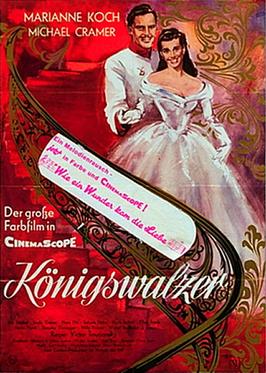
The Royal Waltz is a 1955 West German musical film romance film directed by Victor Tourjansky starring Marianne Koch, Michael Cramer and Linda Geiser. It is a remake of the 1935 film of the same name, part of the tradition of operetta films. It was shot at the Bavaria Studios in Munich and the Carlton Studios in the same city. Location shooting took place in Munich's Englischer Garten and Nymphenburg Palace. The film's sets were designed by the art director Hermann Warm.
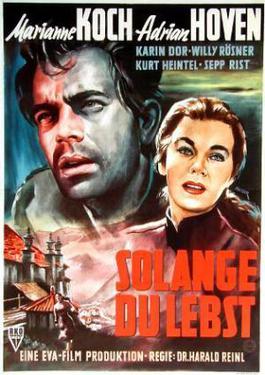
As Long as You Live is a 1955 West German war film directed by Harald Reinl and starring Adrian Hoven, Marianne Koch and Karin Dor. It was made at the Wiesbaden Studios and on location in Seville, Granada and the Sierra Nevada. It is set during the Spanish Civil War, which is seen from a pro-Nationalist viewpoint.

Love and Trumpets is a 1954 West German musical comedy film directed by Helmut Weiss and starring Hans Holt, Nadja Tiller and Marianne Koch. It was shot at the Bavaria Studios in Munich and on location around Sirmione on Lake Garda in Italy. The film's sets were designed by the art director Ludwig Reiber.
Semi-Silk is a 1925 German silent film directed by Richard Oswald and starring Bernd Aldor, Mary Parker and Valeska Stock.

The Monastery's Hunter is a 1953 West German historical drama film directed by Harald Reinl and starring Erich Auer, Marianne Koch and Paul Hartmann. It is based on the 1892 novel of the same title by Ludwig Ganghofer which had previously been made into a 1920 silent film and a 1935 sound film.

The Little Town Will Go to Sleep is a 1954 West German comedy film directed by Hans H. König and starring Gustav Fröhlich, Jester Naefe and Helen Vita. It shares its title with a popular song of the era. It was shot at the Wiesbaden Studios in Hesse and partly on location at Limburg an der Lahn. The film's sets were designed by the art director Hans Sohnle.

They Call It Love is a 1953 West German comedy film directed by John Reinhardt and starring Winnie Markus, Curd Jürgens and Richard Häussler. It was shot at the Bavaria Studios in Munich. The film's sets were designed by the art director Ludwig Reiber.
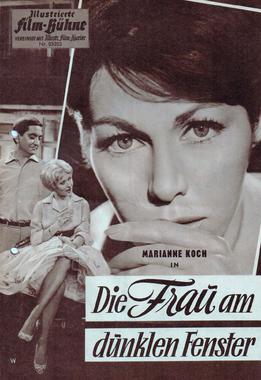
The Woman by the Dark Window is a 1960 West German drama film directed by Franz Peter Wirth and starring Marianne Koch, Christiane Nielsen and Robert Graf.
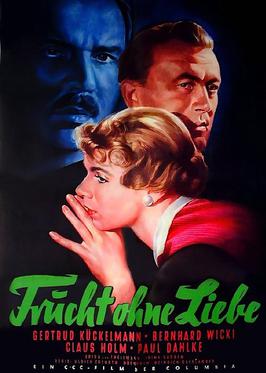
Fruit Without Love is a 1956 West German romantic drama film directed by Ulrich Erfurth and starring Gertrud Kückelmann, Bernhard Wicki and Claus Holm. It was made at the Spandau Studios in West Berlin. The film's sets were designed by the art director Rolf Zehetbauer.
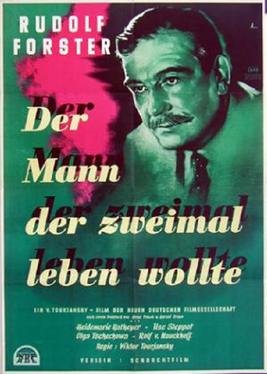
The Man Who Wanted to Live Twice is a 1950 West German drama film directed by Viktor Tourjansky and starring Rudolf Forster, Olga Chekhova and Heidemarie Hatheyer. The future star Marianne Koch made her debut in this film, having been discovered by the director while working at the Bavaria Studios in Munich. The film's sets were designed by the art directors Franz Bi and Botho Hoefer. It was shot at the Bavaria Studios in Munich.
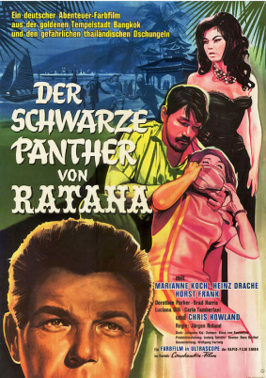
The Black Panther of Ratana is a 1963 West German-Italian adventure film directed by Jürgen Roland and starring Marianne Koch, Heinz Drache, and Horst Frank.

Her Other Self is a 1941 German drama film directed by Wolfgang Liebeneiner and starring Hilde Krahl, Mathias Wieman, and Erich Ponto.

The King's Prisoner is a 1935 German historical comedy film directed by Carl Boese and starring Michael Bohnen, Paul Kemp, and Susi Lanner. It is based around the development of Meissen porcelain during the eighteenth century, particularly the role of the alchemist Johann Friedrich Böttger. It was shot at the Bavaria Studios in Munich. The film's sets were designed by the art director Max Seefelder.
Night of Mystery is a 1927 German silent thriller film directed by Harry Piel and starring Harry Piel, Dary Holm, and Josef Peterhans. It was shot at the Staaken Studios in Berlin. The film's sets were designed by the art director Willi Herrmann.
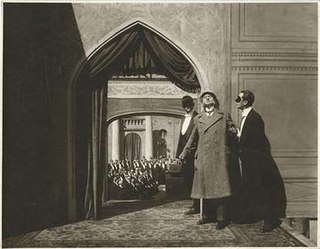
The Masked Ones is a 1920 German silent film directed by Franz Seitz and starring William Dieterle, Karl Günther and Friedrich August Koch.

The Fox of Paris is a 1957 war thriller film directed by Paul May and starring Martin Held, Marianne Koch and Hardy Krüger. It was a co-production between France and West Germany.
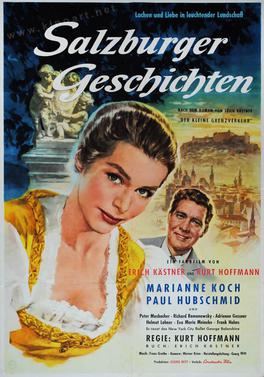
Salzburg Stories is a 1957 West German romantic comedy film directed by Kurt Hoffmann and starring Marianne Koch, Paul Hubschmid and Peter Mosbacher. It was shot at the Bavaria Studios in Munich. The film's sets were designed by the art director Ludwig Reiber.

Crime After School is a 1959 West German drama film directed by Alfred Vohrer and starring Peter van Eyck, Christian Wolff and Heidi Brühl. It was based on a novel by Walter Ebert.

Blind Justice or Excluded to the Public is a 1961 West German crime drama film directed by Harald Philipp and starring Peter van Eyck, Marianne Koch and Eva Bartok.
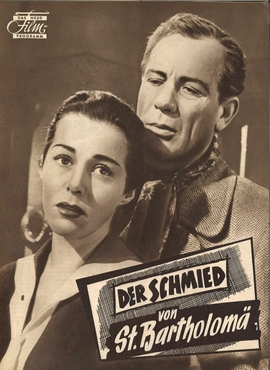
The Blacksmith of St. Bartholomae is a 1955 West German drama film directed by Max Michel and starring Viktor Staal, Marianne Koch and Annie Rosar. It was shot on location at Berchtesgaden in Bavaria and in a makeshift studio nearby. The film's sets were designed by the art director Curt Stallmach. It was part of the postwar boom in heimatfilm that peaked around this year.


















